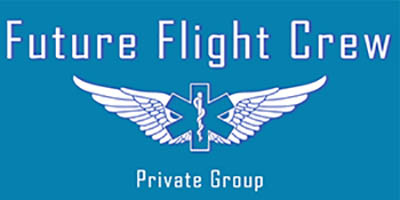— A Simple Calculation for How Long Until The EMS Helicopter Arrives.
If you love math and solve complex word problems to relax..
This article is NOT for you.
If math is a four letter word…
You sometimes use with other more colorful four letter words…
Keep reading.
One of the most repeated questions in the air medical industry is “how long?”
How long until the helicopter gets here?
Everybody wants to know:
The landing zone officer, trauma surgeon, county dispatch centers, ALS, BLS, first responders, even the nurse and paramedic on board the helicopter. Pretty much everyone on the EMS Flight Safety Network team.
A Simple Question Deserves A Simple Answer
Is it possible for EMS other than pilots to estimate helicopter arrival time with accuracy?
Yes, absolutely.
In fact, I think you’ll be pleasantly surprised at just how easy it is.
But before I share the big “secret,” a couple caveats are necessary.
First, realize you are estimating the time. It’s an art, not science.
As long as people drive the ambulances and fly the helicopters, there will never be truly exact times.
Second, if you’ve worked EMS longer than a day, you already know there are very few absolutes in our business.
Variables, by definition, constantly change. Destinations change, addresses change, patient condition changes, and on and on it goes.
Realize you’re about to learn a simple and easy estimation technique. Real response times can and do vary with changing variables and circumstances.
Okay, now that we’ve covered all the common sense disclaimers, let’s get to it.
The Big “Secret” That Makes Helicopter Math Easy
What is the big secret that makes helicopter math so easy?
Here you go:
EMS helicopters cruise at about 120 knots.
Some go a little faster, some a little slower, but all travel across the earth at about 120 knots. Don’t panic, you don’t have to do any math with 120.
Here’s the neat part:
120 knots equals about two miles per minute. Two is a simple number.
Here’s what I mean:
If your landing zone is 30 miles from the closest helicopter base, you now know it will take about 15 minutes for the helicopter to reach you.
How do you know?
Because the quick and easy math is (30 / 2 = 15).
If you also know the launch time for your local helicopter, is say ten minutes…
You now know the estimated time of arrival time for the helicopter is 25 minutes.
How do you know? Again, easy math.
You simply add the 10 minute launch time to your original 15 minutes of flight time…for an Estimated Time of Arrival (ETA) of 25 total minutes. (15 + 10) = 25.
That’s it.
I warned you. It really is easy.
Take the total straight line distance in miles the helicopter needs to fly to reach you, and divide by two. Then add the helicopter launch time to that number.
And you got it. A reasonably accurate time of arrival for your EMS helicopter.
Simple. Easy. Just how we like it.
But there’s one more important step. Share the information with your team. Let everyone in EMS Flight Safety Network know the helicopter’s ETA. It keeps all of us safer.
[divider style=”4″]
Ever thought about a career as a Flight Medic, Flight Nurse, Flight RT or EMS Pilot?
Join our Future Flight Crew Private Facebook Group. It’s chock full of talented folks who will help you succeed.
Answer 3 simple questions to join, takes less than a minute.
CLICK THE BANNER to Sign Up (It’s Free):
EMS Flight Safety Network is The People Who Keep Air Medical Safe
- EMTs | Medics | Nurses
- Pilots | Firefighters | ER Staff
- Security | RRTs | Trauma Doctors
- Landing Zone Coordinators | Dispatchers
- Specialty Transport Teams | Flight Surgeons
- Flight Communication Specialists | Mechanics | Chaplains
- Police | Fire Police | CNAs | NICU Nurses | Retirees | Veterans
- The Family, Friends & Coworkers Who Support These Professionals




5 replies to "EMS Pilot Math Made Easy"
How long does it take to ‘spin up’ a helicopter from sitting cold?
Hi Jim,
Thanks for the question. Depending on the make and model of the EMS helicopter, average time to complete all checklists up to and including the ‘before takeoff checklist’, is three to five minutes.
Most EMS helicopter services estimate a 5 – 15 minute launch time depending on their location and circumstance – airspace requirements, located at an airport or offsite, etc. A ballpark average for the industry is about 10 minutes from engine startup until skids or wheels leaving the ground. Thanks again for the question.
Thank you Troy. But that is arrival overhead. Need to take into consideration safety orbitals and the landing time; add an other 2 to 5 minutes depending on conditions / terrain. Then there is shut down time and access to the patient.
Damien,
You already know you’re right. But….and this is an important caveat, the idea is to give everyone on the EMS Flight Safety Network team an easy way to calculate helicopter arrival time.
That’s it. That’s the goal of the article. So keeping it simple makes sense and sacrifices little accuracy. No need for E6Bs or DME arcs, just old fashioned common sense.
Thanks for commenting. I appreciate it.
Clear Skies & Tailwinds
Thanks for this, good morning trick for all the team to know